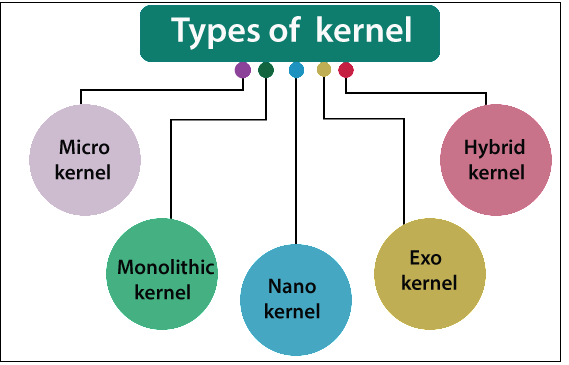Kernel
The Kernel is the central module of an operating system(OS). It is the part of the operating system that loads first, and it remains in main memory. Because it stays in memory. It is important for the kernel to be as small as possible while still providing all the essential services required by other parts of the operating system and applications. The kernel code is usually loaded into a protected area of memory to prevent it from being overwritten by programs or other parts of the operating systems.
Types of Kernel
- Monolithic Kernel
- Micro Kernel
- Hybrid Kernel
- Nano Kernel
- Exo Kernel

Monolithic Kernel : In monolithic kernel, the kernel and operating system both run in the same memory and it is mainly used where security is not major concern. The result of the monolithic kernel is fastly accessible.
Micro Kernel : A Micro kernel is the derived version of the monolithic kernel. In micro kernel, the kernel itself can do different jobs, and there is no requirement of an additional GUI.
Hybrid Kernel : In computer operating systems, a hybrid kernel is a kernel architecture that combines microkernel and monolithic kernel architectures. This kernel design combines the versatility and execution safety of microkernels with the speed and accuracy of monolithic kernels.
Nano Kernel : A nanokernel is a tiny kernel without system services that provides hardware protection. Larger kernels are made to handle more hardware layer and give more capabilities. Because modern microkernels lack system services, the names micro-kernel and Nano-kernel have become identical.
Exo Kernel : Exokernel is a sort of operating system developed at the Massachusetts Institute of Technology to control hardware resources at the application level. To allow for application-specific customization, the exokernel architecture is designed to remove resource protection from management.









0 Comments